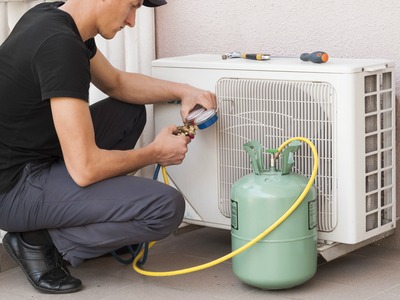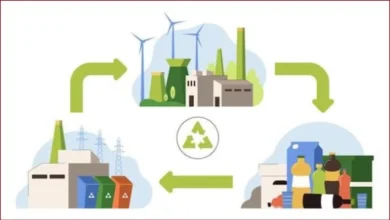Aircon Gas Top-Up: A Comprehensive Guide by Socool

Are you considering an aircon gas top-up? Look no further! This in-depth guide from Socool covers everything you need to know about aircon gas top-ups. From understanding the types of gases to the step-by-step process of topping up, we’ve got you covered. Let’s look deep into the world of aircon gas maintenance!
Professional Aircon Gas Check-Up Services
If your aircon isn’t blowing cold air, it might lose gas over time, impacting its cooling efficiency. Regular professional gas leak check-up services can identify and repair leaks, ensuring your air conditioner is sealed and insulated for optimal efficiency. This not only improves performance but also saves on energy bills.
Click here to learn more at https://www.socool.sg/gas-top-up/.
How Does a Refrigerant Work in Air Conditioning?
Refrigerants, like Freon in most air conditioners, play a crucial role in the cooling process. They evaporate at low temperatures, absorbing heat from inside the home, then condense at high temperatures outside. Over time, refrigerant, especially Freon, can leak, hampering the air conditioner’s cooling capacity. Regular gas top-ups have become essential to maintain efficiency.
Types of Aircon Gas and Their Distinct Differences
Understanding the types of aircon gas is vital for informed decisions:
- R22 Gas: Being phased out due to environmental concerns, it’s still present in older units.
- R410A Gas: Environmentally safer, the current standard offers enhanced air quality and efficiency. They are mainly used in inverter air conditioners.
- R32 Gas: The most environmentally friendly option, but not as widely available as others. It is in select models like the Toshiba Youme and Daikin Ezi series.

Importance of Checking and Refilling Gas
Regularly checking and refilling aircon gas is crucial for maintaining your air conditioner’s efficiency. Gas escapes over time, impacting cooling power and potentially damaging the compressor. Checking and filling gas regularly can extend your air conditioner’s lifespan and ensure peak performance. Understanding the costs, including natural gas residential prices can help homeowners budget effectively for maintenance.
The Step-By-Step Process to Top Up Aircon Gas
If your air conditioner is low on refrigerant, follow these steps:
- Locate the Low-Pressure Service Port: Usually on the larger line from the compressor to the evaporator.
- Attach Can Tap: Screw it onto the low-pressure service port clockwise.
- Open the Valve on the Refrigerant Can. Wait for the gauge reading to stabilize.
- Check Pressure Gauges: Remove can tap if in the green zone. If not, add more refrigerant and repeat until it stabilizes in the green zone.
While topping up aircon gas is straightforward, calling a professional, like Socool, is recommended for any uncertainties or problems. Click here https://www.socool.sg/ to book their services.
Common FAQs
- How do I know if my air conditioner needs a gas top-up?
Check the pressure gauges to see if it’s not blowing cold air or performing below its usual efficiency. A reading in the red zone indicates low refrigerant and the need for a top-up.
- How often does my air conditioner need a gas top-up?
Typically, it occurs every two to three years, but frequency depends on factors like usage and maintenance.
- What are the consequences of not topping up my air conditioner’s gas?
Loss of cooling power, reduced efficiency, and potential compressor damage are expected consequences.
- How much does my air conditioner’s gas cost to top up?
Socool offers free aircon gas top-up services with our aircon cleaning service.
Conclusion
Maintaining proper refrigerant levels is essential for your air conditioner’s longevity and efficiency. Socool provides hassle-free aircon gas top-up services, ensuring your system operates at peak performance. Don’t hesitate to call in professionals for any uncertainties or issues. Contact Socool today for a reliable and efficient aircon gas top-up experience.



